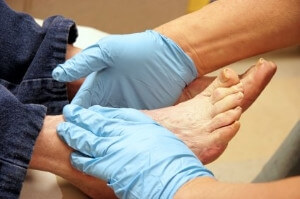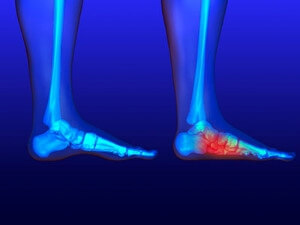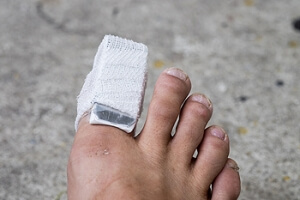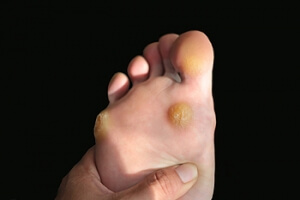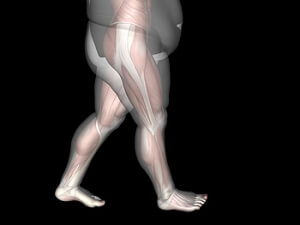Super User
Blisters
Blisters are small pockets of fluid that occur on the top layers of the skin for several reasons. Friction, burns, and diseases are all known causes of blisters. Smaller blisters are known as vesicles, while larger blisters are referred to as bulla. The fluid inside the bubble can be blood, pus, or serum; which is a clear liquid that protects the skin. In most cases, blisters are not a major health issue, but they can be an indicator of a more serious condition.
Causes of blisters vary. Blisters are commonly caused by wearing poorly fitted shoes that rub against the foot. However, there are many other causes besides from friction; including burns, sunburn, insect bites, frostbite, poison ivy/oak, chemical exposure, impetigo, eczema, viral infections, and more.
Most blisters heal by themselves and do not require immediate medical care. If you have a blister, do not pop it since this may cause infection; it is advised to put a bandage over the blister to protect it. If the blister is large, causes pain, or if you have a fever, it is recommended that you see a doctor who can provide proper care. Blisters are easy to diagnose, and if considered prudent by the doctor, can easily be drained of fluid with a sterile needle as well.
To prevent blisters on the feet, wear shoes that fit properly and don’t cause rubbing. Socks can help prevent friction and it is recommended that you wear them if you are wearing shoes. Hand blisters can be avoided by wearing gloves during activities that cause friction against the hand. If you have a blister that pops, do not remove the dead skin, wash the area, apply antibiotic ointment, and cover with a bandage. It is okay in most cases to not seek immediate medical care for a blister if it was just caused by friction. However, if the blister causes pain or does not go away, it is suggested that you see a doctor for a diagnosis.
The Importance of Daily Foot Checks in Diabetic Patients
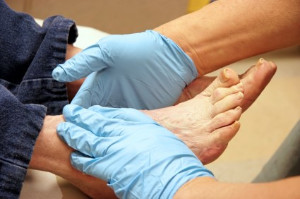 Elevated blood sugar levels may cause a condition that is known as diabetes. The feet can be affected in diabetic patients, so it is extremely important to regularly and thoroughly check the feet for cuts, wounds, or bruises. This condition can cause a loss of feeling in the feet due to damaged nerves, and foot ulcers may result from infected cuts that go unnoticed. It is beneficial to frequently trim the toenails, and perform daily foot checks. Some patients may find it difficult to see the bottom of their feet, and it may help to use a mirror. Comfort can be found when the correct shoes are worn, and this is an effective method of protecting the feet. If you have diabetes it is strongly recommended that you are under the care of a podiatrist who can help you manage this condition.
Elevated blood sugar levels may cause a condition that is known as diabetes. The feet can be affected in diabetic patients, so it is extremely important to regularly and thoroughly check the feet for cuts, wounds, or bruises. This condition can cause a loss of feeling in the feet due to damaged nerves, and foot ulcers may result from infected cuts that go unnoticed. It is beneficial to frequently trim the toenails, and perform daily foot checks. Some patients may find it difficult to see the bottom of their feet, and it may help to use a mirror. Comfort can be found when the correct shoes are worn, and this is an effective method of protecting the feet. If you have diabetes it is strongly recommended that you are under the care of a podiatrist who can help you manage this condition.
Diabetic foot care is important in preventing foot ailments such as ulcers. If you are suffering from diabetes or have any other concerns about your feet, contact Dr. Thomas Madden from Advanced Foot Care Center. Our doctor can provide the care you need to keep you pain-free and on your feet.
Diabetic Foot Care
Diabetes affects millions of people every year. The condition can damage blood vessels in many parts of the body, especially the feet. Because of this, taking care of your feet is essential if you have diabetes, and having a podiatrist help monitor your foot health is highly recommended.
The Importance of Caring for Your Feet
- Routinely inspect your feet for bruises or sores.
- Wear socks that fit your feet comfortably.
- Wear comfortable shoes that provide adequate support.
Patients with diabetes should have their doctor monitor their blood levels, as blood sugar levels play such a huge role in diabetic care. Monitoring these levels on a regular basis is highly advised.
It is always best to inform your healthcare professional of any concerns you may have regarding your feet, especially for diabetic patients. Early treatment and routine foot examinations are keys to maintaining proper health, especially because severe complications can arise if proper treatment is not applied.
If you have any questions please feel free to contact our office located in Killeen, TX . We offer the newest diagnostic and treatment technologies for all your foot and ankle needs.
Possible Causes of Flat Feet
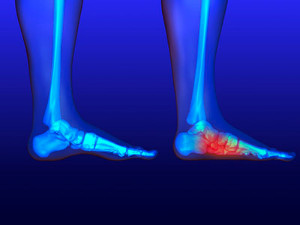 People who have flat feet are aware of the absence of an arch in their feet. It is easily noticed when the entire foot lies flat on the floor while standing. Patients who have flat feet may find their feet are achy, and it may be difficult to walk for long periods of time. This condition may develop for a variety of reasons. These can consist of genetic traits, obesity, or gradual weight gain that can come from pregnancy. Mild relief may be found when insoles are worn, and specific foot exercises are frequently performed that can help to strengthen the entire foot. In severe cases, surgery may be necessary to help correct this ailment. If you were born with flat feet, or have developed this condition, it is suggested that you consult with a podiatrist who can help you with correct treatment options.
People who have flat feet are aware of the absence of an arch in their feet. It is easily noticed when the entire foot lies flat on the floor while standing. Patients who have flat feet may find their feet are achy, and it may be difficult to walk for long periods of time. This condition may develop for a variety of reasons. These can consist of genetic traits, obesity, or gradual weight gain that can come from pregnancy. Mild relief may be found when insoles are worn, and specific foot exercises are frequently performed that can help to strengthen the entire foot. In severe cases, surgery may be necessary to help correct this ailment. If you were born with flat feet, or have developed this condition, it is suggested that you consult with a podiatrist who can help you with correct treatment options.
Flatfoot is a condition many people suffer from. If you have flat feet, contact Dr. Thomas Madden from Advanced Foot Care Center. Our doctor will treat your foot and ankle needs.
What Are Flat Feet?
Flatfoot is a condition in which the arch of the foot is depressed and the sole of the foot is almost completely in contact with the ground. About 20-30% of the population generally has flat feet because their arches never formed during growth.
Conditions & Problems:
Having flat feet makes it difficult to run or walk because of the stress placed on the ankles.
Alignment – The general alignment of your legs can be disrupted, because the ankles move inward which can cause major discomfort.
Knees – If you have complications with your knees, flat feet can be a contributor to arthritis in that area.
Symptoms
- Pain around the heel or arch area
- Trouble standing on the tip toe
- Swelling around the inside of the ankle
- Flat look to one or both feet
- Having your shoes feel uneven when worn
Treatment
If you are experiencing pain and stress on the foot you may weaken the posterior tibial tendon, which runs around the inside of the ankle.
If you have any questions please feel free to contact our office located in Killeen, TX . We offer the newest diagnostic and treatment technologies for all your foot and ankle needs.
Read more about Flat FeetFlat Feet
Flatfoot is a condition that occurs when the arches on the foot are flattened, which allows the soles of the feet to touch the floor. Flatfoot is a common condition and it is usually painless.
Throughout childhood, most people begin to develop arches in their feet, however, some do not. Those who do not develop arches are left with flatfoot. The pain associated with flat feet is usually at its worse when engaging in activity. Another symptom that may occur with those who have this condition is swelling along the inside of the ankle.
It is also possible to have flexible flatfoot. Flexible flatfoot occurs when the arch is visible while sitting or standing on the tiptoes, but it disappears when standing. People who have flexible flatfoot are often children and most outgrow it without any problems.
There are some risk factors that may make you more likely to develop flatfoot. Those who have diabetes and rheumatoid arthritis have an increased risk of flatfoot development. Other factors include aging and obesity.
Diagnosis for flat feet is usually done by a series of tests by your podiatrist. Your podiatrist will typically try an x-ray, CT scan, ultrasound, or MRI on the feet. Treatment is usually not necessary for flat foot unless it causes pain. However, therapy is often used for those who experience pain in their flat feet. Some other suggested treatment options are arch supports, stretching exercises, and supportive shoes.
How Can I Treat My Broken Toe?
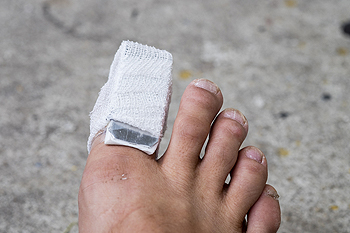 A broken toe is considered to be one of the most common types of fractures. The toes consist of several small bones, which can easily become broken. It can happen from dropping a heavy object on your toe, or from possibly stubbing it against a piece of furniture. A broken toe generally causes difficulty walking, and can take between four to six weeks to completely heal. Many patients choose to use a treatment method that is referred to as buddy taping, which may be effective for mild fractures. This consists of taping the affected toe to the toe next to it. This treatment method can provide the support that is needed as the healing process occurs. If you have broken your toe, it is suggested that you consult with a podiatrist who can treat mild or severely fractured toes.
A broken toe is considered to be one of the most common types of fractures. The toes consist of several small bones, which can easily become broken. It can happen from dropping a heavy object on your toe, or from possibly stubbing it against a piece of furniture. A broken toe generally causes difficulty walking, and can take between four to six weeks to completely heal. Many patients choose to use a treatment method that is referred to as buddy taping, which may be effective for mild fractures. This consists of taping the affected toe to the toe next to it. This treatment method can provide the support that is needed as the healing process occurs. If you have broken your toe, it is suggested that you consult with a podiatrist who can treat mild or severely fractured toes.
A broken toe can be very painful and lead to complications if not properly fixed. If you have any concerns about your feet, contact Dr. Thomas Madden from Advanced Foot Care Center. Our doctor will treat your foot and ankle needs.
What to Know About a Broken Toe
Although most people try to avoid foot trauma such as banging, stubbing, or dropping heavy objects on their feet, the unfortunate fact is that it is a common occurrence. Given the fact that toes are positioned in front of the feet, they typically sustain the brunt of such trauma. When trauma occurs to a toe, the result can be a painful break (fracture).
Symptoms of a Broken Toe
- Throbbing pain
- Swelling
- Bruising on the skin and toenail
- The inability to move the toe
- Toe appears crooked or disfigured
- Tingling or numbness in the toe
Generally, it is best to stay off of the injured toe with the affected foot elevated.
Severe toe fractures may be treated with a splint, cast, and in some cases, minor surgery. Due to its position and the pressure it endures with daily activity, future complications can occur if the big toe is not properly treated.
If you have any questions please feel free to contact our office located in Killeen, TX . We offer the newest diagnostic and treatment technologies for all your foot and ankle needs.
Do I Want to Pursue Podiatry as a Career?
 People who choose to explore the field of podiatry are interested in learning about conditions that impact the feet. Research has indicated there is a growing need for podiatrists, and this may be a result of the elderly population that are living longer and in need of assistance. Additionally, people who participate in sporting activities and physical fitness may find a need to use the services of a podiatrist, and treat any existing foot conditions. The education consists of acquiring a bachelor's degree, followed by completing a four-year program to become a doctor of podiatric medicine (DPM). A student will spend the last two years of that program learning about all aspects of podiatry, and it may be helpful to work in a podiatric environment. If you are interested in helping people with various foot ailments, please consult with a podiatrist who can help you in determining if this a correct career choice for you.
People who choose to explore the field of podiatry are interested in learning about conditions that impact the feet. Research has indicated there is a growing need for podiatrists, and this may be a result of the elderly population that are living longer and in need of assistance. Additionally, people who participate in sporting activities and physical fitness may find a need to use the services of a podiatrist, and treat any existing foot conditions. The education consists of acquiring a bachelor's degree, followed by completing a four-year program to become a doctor of podiatric medicine (DPM). A student will spend the last two years of that program learning about all aspects of podiatry, and it may be helpful to work in a podiatric environment. If you are interested in helping people with various foot ailments, please consult with a podiatrist who can help you in determining if this a correct career choice for you.
If you are experiencing pain in the feet or ankles, don’t join the stubborn majority refusing treatment. Feel free to contact Dr. Thomas Madden from Advanced Foot Care Center. Our doctor can provide the care you need to keep you pain-free and on your feet.
What Is a Podiatrist?
Someone would seek the care of a podiatrist if they have suffered a foot injury or have common foot ailments such as heal spurs, bunions, arch problems, deformities, ingrown toenails, corns, foot and ankle problems, etc.
Podiatric Treatment
A podiatrist will treat the problematic areas of the feet, ankle or lower leg by prescribing the following:
- Physical therapy
- Drugs
- Orthotic inserts or soles
- Surgery on lower extremity fractures
A common podiatric procedure a podiatrist will use is a scanner or force plate which will allow the podiatrist to know the designs of orthotics. Patients are then told to follow a series of tasks to complete the treatment. The computer will scan the foot a see which areas show weight distribution and pressure points. The podiatrist will read the analysis and then determine which treatment plans are available.
If you have any questions please feel free to contact our office located in Killeen, TX . We offer the newest diagnostic and treatment technologies for all your foot and ankle needs.
Read more about What is a Podiatrist?Possible Causes of Corns
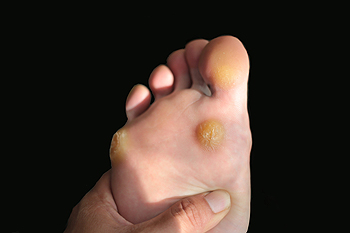 Corns are small, thick, and hardened layers of skin that can grow inward on the bottom of the feet. Additionally, corns can form between the toes, and can cause general pain and discomfort. These typically occur as a result of wearing shoes that do not fit correctly, and can appear on the pressure points of the foot. Mild relief may be felt when there is a protective pad worn over the corn. Corns that are bigger, which alter the style of walking, may need to be removed by a podiatrist, who can also recommend wearing orthotics to help to prevent corns from developing in the future.
Corns are small, thick, and hardened layers of skin that can grow inward on the bottom of the feet. Additionally, corns can form between the toes, and can cause general pain and discomfort. These typically occur as a result of wearing shoes that do not fit correctly, and can appear on the pressure points of the foot. Mild relief may be felt when there is a protective pad worn over the corn. Corns that are bigger, which alter the style of walking, may need to be removed by a podiatrist, who can also recommend wearing orthotics to help to prevent corns from developing in the future.
Corns can make walking very painful and should be treated immediately. If you have questions regarding your feet and ankles, contact Dr. Thomas Madden of Advanced Foot Care Center. Our doctor will treat your foot and ankle needs.
Corns: What Are They? And How Do You Get Rid of Them?
Corns are thickened areas on the skin that can become painful. They are caused by excessive pressure and friction on the skin. Corns press into the deeper layers of the skin and are usually round in shape.
Ways to Prevent Corns
There are many ways to get rid of painful corns such as:
- Wearing properly fitting shoes that have been measured by a professional
- Wearing shoes that are not sharply pointed or have high heels
- Wearing only shoes that offer support
Treating Corns
Although most corns slowly disappear when the friction or pressure stops, this isn’t always the case. Consult with your podiatrist to determine the best treatment option for your case of corns.
If you have any questions please feel free to contact our office located in Killeen, TX . We offer the newest diagnostic and treatment technologies for all your foot and ankle needs.
Understanding Corns and Calluses
Corns and Calluses are both hardened layers of thickened skin that develop because of friction. Both ailments are typically found on the feet and may be unsightly. Although they have similarities, corns and calluses are different from each other.
Some causes of corns and calluses may be wearing ill-fitting shoes and not wearing socks. If you wear tight shoes, your feet will constantly be forced to rub against the shoes, causing friction. If you fail to wear socks, you are also causing your feet to endure excess friction.
There are some signs that may help you determine whether you have one of these two conditions. The first symptom is a thick, rough area of skin. Another common symptom is a hardened, raised bump on the foot. You may also experience tenderness or pain under the skin in addition to flaky, dry, or waxy skin.
There are also risk factors that may make someone more prone to developing corns and calluses. If you are already dealing with bunions or hammertoe, you may be more vulnerable to having corns and calluses as well. Other risk factors are foot deformities such as bone spurs, which can cause constant rubbing inside the shoe.
Corns tend to be smaller than calluses and they usually have a hard center surrounded by inflamed skin. They also tend to develop on the parts of the body that don’t bear as much weight such as the tops and sides of toes. Corns may also be painful for those who have them. On the other hand, calluses are rarely painful. These tend to develop on the bottom of the feet and may vary in size and shape.
Fortunately, most people only need treatment for corns and calluses if they are experiencing discomfort. At home treatments for corns and calluses should be avoided, because they will likely lead to infection. If you have either of these ailments it is advised that you consult with your podiatrist to determine the best treatment option for you.
Can My Child Have Foot Conditions as a Result of Being Overweight?
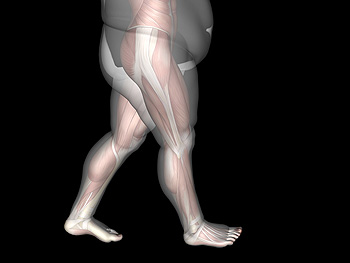 Research has indicated the chances may increase for children who are obese to have difficulty in walking. The feet may be affected by the additional weight, and this may cause the gait to change. Additionally, it may be more difficult for overweight children to balance, possibly as a result of weakened muscles in the feet. Flat feet is common among obese children. This may lead to general fatigue in the body, and it can become difficult to maintain activity levels. If you would like more information about how obesity can affect your children’s feet, it is advised that you consult with a podiatrist.
Research has indicated the chances may increase for children who are obese to have difficulty in walking. The feet may be affected by the additional weight, and this may cause the gait to change. Additionally, it may be more difficult for overweight children to balance, possibly as a result of weakened muscles in the feet. Flat feet is common among obese children. This may lead to general fatigue in the body, and it can become difficult to maintain activity levels. If you would like more information about how obesity can affect your children’s feet, it is advised that you consult with a podiatrist.
Obesity has become very problematic at this point in time and can have extremely negative effects on the feet. If you’re an obese individual and are concerned about your feet, contact Dr. Thomas Madden from Advanced Foot Care Center. Our doctor can provide the care you need to keep you pain-free and on your feet.
Obesity and Your Feet
Since your feet are what support your entire weight when standing, any additional weight can result in pain and swelling. Being overweight is one of the main contributors to foot complications.
Problems & Complications
Extra Weight – Even putting on just a few extra pounds could create serious complications for your feet. As your weight increases, your balance and body will shift, creating new stresses on your feet. This uneven weight distribution can cause pain, even while doing the simplest tasks, such as walking.
Diabetes – People who are overweight are at serious risk of developing type-2 diabetes, which has a drastic impact on the health of your feet. As you get older, your diabetes might worsen, which could lead to loss of feeling in your feet, sores, and bruises. You could also become more prone to various infections.
Plantar fasciitis – Pressure and stress that is placed on muscles, joints, and tendons can trigger plantar fasciitis, which is an inflammation of tissue that forms along the bottom of the foot.
If you have any questions please feel free to contact our office located in Killeen, TX . We offer the newest diagnostic and treatment technologies for all your foot and ankle needs.
How Obesity Affects Your Feet
Gaining weight can happen suddenly and at any time. Usually you won’t notice the extra weight until your feet start hurting at the end of the day. This happens as your feet begin adjusting to carrying more weight. Foot swelling and pain are two of the biggest side effects of having gained weight.
Many foot-related problems can occur even after just putting on a few pounds. This includes the body ‘compensating’ by changing the way it moves. You may find yourself putting extra weight on the wrong parts of your feet and even leaning forward a bit. Your feet were designed to carry a healthy, normal body weight. Extra weight places undue stress on them.
Being overweight often causes the development of Type-2 diabetes, causing leg and foot pain. Older people who do not attempt to control their condition can even lose sensation and feeling in their legs and feet. This can lead to the development of small sores that can lead to serious infection.
Extra stress placed on the joints, tendons and muscles in the feet as a result of extra body weight may also cause heel spurs, or plantar fasciitis. Plantar fasciitis is an inflammation of the foot tissue, causing stiffness and pain when walking and climbing stairs. This can usually be relieved by foot stretches and custom made orthotic shoe-inserts.
Problems in the feet triggered by obesity can be treated by paying special attention to footwear. Proper support shoes that allow for good circulation, especially in the arch and ankle, are vital. A podiatrist can help you find what sort of shoe is most suitable for your feet. They can also measure you for special orthotics if necessary.
It could also be high time to start losing weight in order to treat and prevent diabetes as well as other life threatening diseases. Some methods include yoga and water aerobics, which benefit your entire body without placing stress on your feet. Don’t risk losing your feet by losing interest in them. Take care of your feet and your body, as they deserve the very best.

